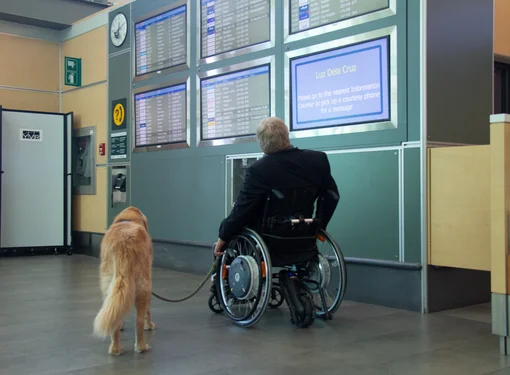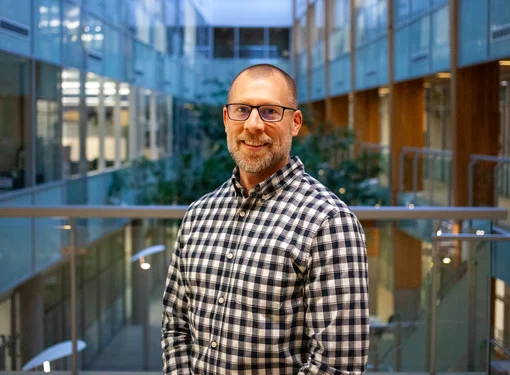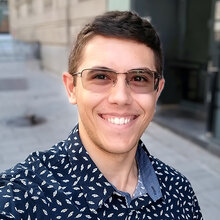Employment tips for people with disabilities
Did you know that October is National Disability Employment Awareness Month? This month individuals and businesses across Canada will create conversations to help increase the awareness about the benefits of hiring people with disabilities.
The unemployment numbers with people with disabilities are significant; only half of Canadians with disabilities are employed. Social stigma surrounding disability and a lack of understanding about the disability experience, along with inaccessible public buildings and offices, are major obstacles that still need to be overcome in order to change these numbers.
Important work is being done across the country to reduce stigmas and stereotypes and make public spaces more accessible, but what can someone with a disability do to find work now? Below is a personal story from Stephanie Carvalho, Equity, Diversity, Inclusion Program Administrator for Human Resource Services at the University of Alberta that talks about her personal struggle with unemployment as a woman with a disability, and her tips and resources if you’re having trouble finding work.
***
When I was asked to write a blog post about National Disability Employment Awareness Month, I was excited to talk about this extremely important topic of disability employment. As a person with a disability, I personally have been unemployed twice and didn’t get my first job until a year after completing my degree at the age of 26. And I didn’t take the typical avenue to find employment either. I joined a disability employment agency to assist me in finding work, and after a year, they helped find me a volunteer work experience placement that eventually turned into meaningful full-time employment.
Towards the end of 2011, I participated in a work experience placement with the Employment Equity Program in Human Resource Services at the University of Alberta. I was excited to return to the university where I learned and experienced so much as a student, and wanted to help contribute in whatever way I could. The placement gave me valuable on-the-job experience and skills, but it also allowed me to demonstrate my abilities and showcase my strengths. The environment I was in, including mentorship from my supervisor, allowed me to grow as an employee and to add my talents. Now I manage workforce diversity data, support my team with planning and executing educational events, and I also co-deliver workshops on human rights, sustainability, and diversity and inclusion in the workplace.
While my story does end in gainful employment, this doesn’t really touch on the mental and emotional experience of that year, and how it felt to be constantly doubting my skills, feeling hopeless that I wouldn’t ever get a job, and trying everything and reaching out to anyone I could. I had no professional network, and relied on my adviser at the employment agency to guide me. I was lucky that I had a supportive family, but it was so difficult to want to work, but not have the experience or access to networks to even get an interview.
Since I began working in human resource services, I’ve gained invaluable experience working with various people (with and without disabilities) by helping them find work-experience placements like mine. Finding employment is hard, and is compounded if one faces additional barriers like a physical disability, so I want to share what I've learned along the way, and help increase the representation of people with disabilities in the workplace.The tips below are a starting point and are definitely not all that is available, but would be a good start to your employment search.
Employment tips and resources for people with disabilities:
- Have an idea of your strengths and what type of environment you would work best in (no one understands you better than you). Remember to first engage with yourself and your goals to help drive your job search. If you like to work in a quiet environment, front line work perhaps isn’t for you. This also includes what you might need in terms of physical and technological accommodations.
- Have a career support counsellor review your cover letter and resume to make it as strong as possible. Hiring organizations compare the skills they're looking for match to the skills and experiences outlined in the resume. Gaps in resumes are usually red flag for organizations, so a skilled career counsellor can help guide you in navigating those hurdles and offer tips on interview and post-interview protocol.
- Research local agencies that work with people with disabilities as they may have resources and networks that you can be connected to. Also, other agencies will have supports for persons with disabilities that also serve a specific population such as indigenous employment agencies, newcomer centres, or youth services. Often times these organizations will have career counsellors where you can get a resume reviewed, and guidance with how to frame lack of work experience.
- If you are able to, volunteer and network. References are important and networking will get your name out. This is consistently been proven to be the most effective way of building a network and finding work.
- Your provincial government has services for people with disabilities, and their websites are a great place for information.
- The federal government also has an online job bank, as well as helpful information for employment-seeking people with disabilities.
- Two disability-specific online job banks are WORKInk, a dedicated space for job postings by equity employers offering inclusive employment and Lime Connect, an online resource that has job postings, professional development offerings, coaching and networking events.
Hopefully these tips will help you get a foothold in the employment market. Meanwhile, we’ll all keep working towards overcoming the biggest hurdle to employment for people with disabilities: educating and changing the perceptions of employers. Through discussion and learning, employers can come to understand that people with disabilities are an untapped workforce who are ready to transform the way business can be done.
***
About the guest blogger: Stephanie Carvalho is the Equity, Diversity, Inclusion (EDI) Program Administrator for Human Resource Services, University of Alberta. She received her Bachelor of Arts in 2010 from the University of Alberta and has been working in the field of equity for six years.
If you have any questions for Stephanie, please send them to info@rickhansen.com.






